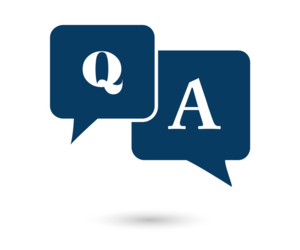“What is the best treatment for ankle arthritis?”
I have ankle arthritis. What is the best treatment for ankle arthritis?
13 Answers
That depends on how severe the ankle arthritis is. There are multiple types of injections (PRP, Cortisone, Stem Cells) and surgical intervention includes arthroscopy, ankle fusion, ankle joint replacement
For ankle arthritis pain I recommend the modalities of acupuncture, herbs and massage 2-3 times a week for 4-6 weeks to get the best result.
For this problem, a combination of conservative treatments like physical therapy, bracing, activity modification, and pain management is often recommended, with surgery considered if these methods fail to provide adequate relief.
Softwave trt technology, reduces inflammation, breaksdown scar tissue, increases blood supply, increases nerve supply and stimulates release of blood born factors for stem cell release.
It depends on the severity of the arthritis. A lot of factors go into treatment of arthritis, from mechanism of injury to inflammatory markers relating to diet/nutrition. The first and most important component is creating and restoring motion back to the joint. We are ideal for this, but we do need to make sure it's safe. The best way to know is to see-- so if it were me treating arthritis, I would want to have imaging so we know the extent of the arthritic damage. Then we can see how much we can do and incorporate to heal.
Treatment of ankle arthritis depends on stage of arthritis like mild, moderate or severe. Depending on stage your doctor might recommend physical therapy or injections of visco gel or cortisone or PRP stem cells or surgical treatment. Please see orthopedic doctor close to you. Thanks Rupesh Tarwala
Ankle arthritis is a common condition we treat at our chiropractic clinic in Belmont, California. Many of our patients suffer from chronic high and low ankle sprains that, due to inadequate rehabilitation or physical therapy, have led to muscle deterioration around the subtalar joint. This weakening of the ankle not only increases the likelihood of recurring sprains but also contributes to long-term biomechanical imbalances.
Over time, these weaknesses lead to compensatory muscle activation patterns that diminish proprioceptive feedback to the lower extremities. As a result, patients often experience functional deficits that extend beyond the ankle, affecting the knees, hips, and lower back. Changes in gait, balance, and overall postural stability further exacerbate the issue, increasing the risk of pain and injury in other areas of the body.
To address these concerns, we conduct a thorough orthopedic assessment, along with a detailed gait and postural analysis, to accurately identify dysfunctions in the lower extremities. Based on our findings, we develop a personalized treatment plan incorporating joint mobilization, chiropractic adjustments, and soft tissue therapy, alongside targeted rehabilitation exercises. This comprehensive approach helps break down scar tissue, restore joint mobility, reduce pain, improve range of motion and ultimately restore stability and strength
The duration of recovery depends on factors such as the chronicity of the condition and the degree of postural compensations that have developed over time. By addressing these dysfunctions holistically, we aim to not only improve ankle function but also enhance overall movement efficiency of the lower extremity.
Over time, these weaknesses lead to compensatory muscle activation patterns that diminish proprioceptive feedback to the lower extremities. As a result, patients often experience functional deficits that extend beyond the ankle, affecting the knees, hips, and lower back. Changes in gait, balance, and overall postural stability further exacerbate the issue, increasing the risk of pain and injury in other areas of the body.
To address these concerns, we conduct a thorough orthopedic assessment, along with a detailed gait and postural analysis, to accurately identify dysfunctions in the lower extremities. Based on our findings, we develop a personalized treatment plan incorporating joint mobilization, chiropractic adjustments, and soft tissue therapy, alongside targeted rehabilitation exercises. This comprehensive approach helps break down scar tissue, restore joint mobility, reduce pain, improve range of motion and ultimately restore stability and strength
The duration of recovery depends on factors such as the chronicity of the condition and the degree of postural compensations that have developed over time. By addressing these dysfunctions holistically, we aim to not only improve ankle function but also enhance overall movement efficiency of the lower extremity.
Osteopathic Manipulative Treatment (OMT) can be a beneficial part of your father’s recovery after a stroke. While OMT does not directly “strengthen” muscles like physical therapy or resistance training, it can help improve circulation, nerve function, and musculoskeletal alignment, which can support muscle function and overall mobility.
Here’s how OMT might help in his case:
Improving Blood Flow & Lymphatic Drainage – Helps reduce swelling and promote healing in affected areas.
Enhancing Nervous System Function – Can aid in neuromuscular re-education, helping the brain and body communicate better.
Reducing Muscle Spasms & Stiffness – Useful for managing spasticity or tight muscles often seen after a stroke.
Restoring Range of Motion – Can help improve flexibility and mobility in affected limbs.
Supporting Breathing & Digestion – Certain OMT techniques can improve respiratory and digestive function, which may be impacted post-stroke.
For muscle strengthening, I’d recommend combining OMT with physical and occupational therapy to help your father regain strength and movement. Always consult with his healthcare team to ensure the best approach for his recovery!
Here’s how OMT might help in his case:
Improving Blood Flow & Lymphatic Drainage – Helps reduce swelling and promote healing in affected areas.
Enhancing Nervous System Function – Can aid in neuromuscular re-education, helping the brain and body communicate better.
Reducing Muscle Spasms & Stiffness – Useful for managing spasticity or tight muscles often seen after a stroke.
Restoring Range of Motion – Can help improve flexibility and mobility in affected limbs.
Supporting Breathing & Digestion – Certain OMT techniques can improve respiratory and digestive function, which may be impacted post-stroke.
For muscle strengthening, I’d recommend combining OMT with physical and occupational therapy to help your father regain strength and movement. Always consult with his healthcare team to ensure the best approach for his recovery!




